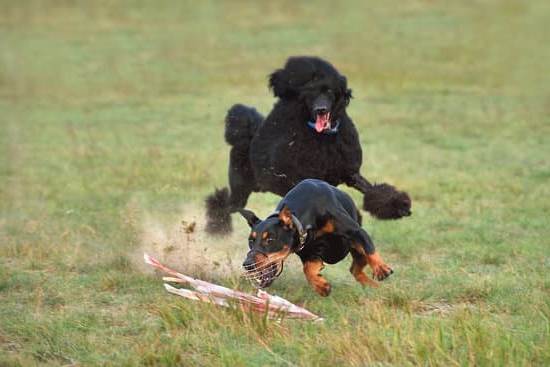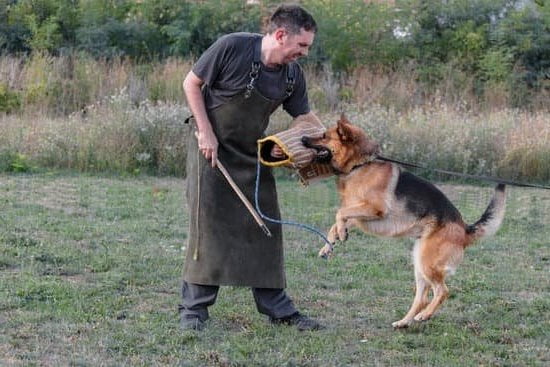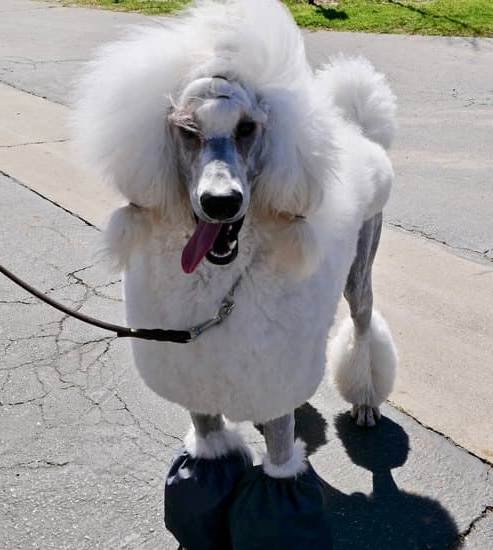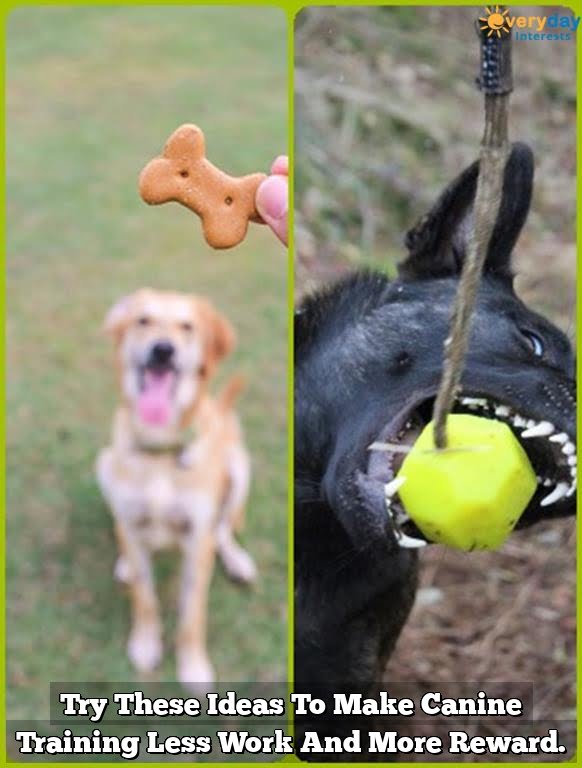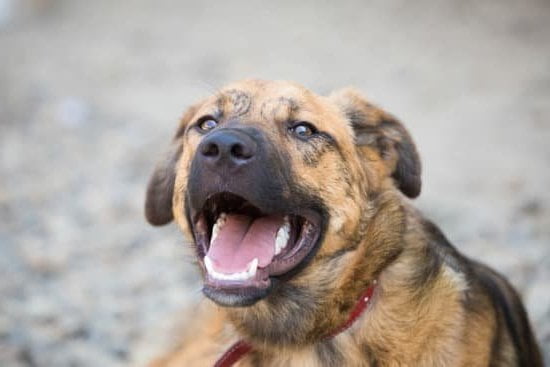Training your dog can be a rewarding and fulfilling experience, and one of the most effective methods is reward training. In this article, we will explore how reward training can shape desirable behaviors in dogs and strengthen the bond between you and your furry companion.
Understanding the basics of dog training and behavior is crucial, as it lays the foundation for successful reward training. We will discuss positive reinforcement, its effectiveness in training dogs, and how to create a conducive environment for training sessions.
Reward training is widely regarded as one of the most effective methods for teaching dogs desired behaviors. Unlike punishment-based methods, which can lead to fear or aggression, reward training focuses on positive reinforcement to encourage good behavior. By rewarding your dog with treats, praise, or toys when they exhibit the desired behavior, you are more likely to see that behavior repeated in the future.
Not only does reward training yield results, but it also plays a crucial role in building a strong relationship between you and your dog. When using positive reinforcement techniques, you are actively engaging with your dog in a way that promotes trust and mutual understanding. You become partners in learning together, creating a lifelong bond based on respect and love.
Understanding these principles sets us up for success in our journey to train our dogs effectively. Let’s delve into the basics of dog training and behavior to gain insight into why reward training is so powerful. Additionally, we will explore how setting the stage for reward training by creating a suitable environment and selecting the right rewards is essential for achieving optimal results.
Understanding the Basics of Dog Training and Behavior
When it comes to training your dog, understanding the basics of dog behavior and training principles is crucial. This section will provide an overview of the fundamental concepts behind reward training and positive reinforcement.
The Principles Behind Reward Training
Reward training is based on the principle that dogs are more likely to repeat behaviors that are followed by a pleasant consequence. This approach focuses on rewarding desirable behaviors rather than punishing unwanted ones. By associating positive experiences with specific actions, dogs learn to associate those actions with rewards and are motivated to perform them more frequently.
The Concept of Positive Reinforcement
Positive reinforcement is a core component of reward training. It involves providing something of value, such as treats, toys, or praise, immediately after a dog exhibits a desired behavior. The purpose is to reinforce that behavior positively, increasing the likelihood of its repetition in the future.
One key aspect of positive reinforcement is timing. The reward should be given right after the desired behavior occurs so that the dog can clearly understand what they’re being rewarded for. For example, if you want to teach your dog to sit on command, you should offer a treat or praise as soon as their bottom touches the ground.
Using positive reinforcement allows you to establish a strong bond with your dog through trust, communication, and cooperation. It also helps create a positive association with training sessions and builds your dog’s confidence and eagerness to learn.
By understanding these basic principles and incorporating them into your training approach, you can effectively teach your dog new behaviors while strengthening your relationship with them at the same time.
Setting the Stage
Preparing for reward training is crucial to ensure successful and effective dog training sessions. Before embarking on reward training, it is important to create a conducive environment that sets the stage for learning and facilitates the desired behaviors in your dog. This section will discuss key elements of preparing for reward training, including consistency, patience, timing, and creating the right environment.
Consistency is a vital component when it comes to setting the stage for reward training. Dogs learn best when they can predict and understand the consequences of their actions. Therefore, it is important to establish clear rules and expectations from the beginning. Consistency in commands, rewards, and timing will help your dog understand what you expect from them and reinforce their understanding of desired behaviors.
Patience is another crucial aspect of preparing for reward training. Dogs may require time to understand new commands or behaviors, and it is important not to become frustrated or give up too quickly. Keeping calm and patient during training sessions will contribute to a positive learning environment that fosters trust between you and your dog.
Timing plays a significant role in reward training as well. Timing refers to delivering rewards immediately after your dog displays the desired behavior.It is essential to provide immediate reinforcement so that your dog can clearly associate their action with the corresponding reward. This instant gratification strengthens the association between behavior and consequence in your dog’s mind while maintaining their focus and motivation during future training sessions.
Creating an ideal environment for reward training involves minimizing distractions that may hinder your dog’s ability to concentrate on the task at hand. Choose a quiet area free from external disturbances where you can work with your dog without interruptions. You can gradually introduce distractions once your dog has mastered basic commands.
By setting consistent expectations, demonstrating patience, perfecting timing, and providing an optimal environment for learning, you are well on your way to laying the foundation for successful reward training with your fur companion.
Stay tuned as we now move on to discussing how to select the right rewards for your dog in the next section.
Selecting the Right Rewards for Your Dog
Reward training is an effective method to shape desirable behaviors in dogs, but the success of this training approach relies heavily on selecting the right rewards for your dog. By understanding what motivates and incentivizes your furry companion, you can ensure that they are engaged and eager to participate in training sessions. In this section, we will explore the importance of choosing the most motivating rewards for your dog and how to use high-value rewards for more challenging tasks.
When it comes to selecting rewards for your dog during training, it is essential to consider their preferences. Every dog has different likes and dislikes, so paying attention to what makes your dog excited or happy is crucial. For instance, some dogs may be highly food motivated and respond well to treats such as small pieces of chicken or cheese.
Other dogs may be more toy driven and prefer playing with a favorite squeaky toy as a reward. Additionally, verbal praise and petting can also be powerful rewards for many dogs.
It is important to note that not all rewards hold equal value for every task or command during training. For more challenging behaviors or tasks that require extra motivation, it is advisable to use high-value rewards.
High-value rewards are typically associated with items or experiences that are particularly exciting or enticing for your dog. These types of rewards can include special treats like freeze-dried liver or small pieces of hot dog, engaging playtime with a favorite toy, or even access to activities they enjoy such as going on a car ride or a trip to the local park.
| Reward Type | Description |
|---|---|
| Treats | Small pieces of chicken, cheese |
| Toys | Favorite squeaky toy |
| Praise and Petting | Verbal encouragement and physical affection |
| High-Value Rewards | Freeze-dried liver, hot dog, engaging playtime, access to preferred activities |
By understanding your dog’s preferences and utilizing both regular rewards and high-value rewards strategically, you can ensure that their motivation remains high throughout the training process. Experimenting with different types of rewards and observing your dog’s response can help you tailor your training approach to what works best for them. Remember, the key is to make the reward significant and exciting enough for your dog to associate it with their desired behavior.
Clicker Training
Clicker training is a highly effective method that can be used to reinforce and shape desired behaviors in dogs. The clicker, a small handheld device that makes a distinct clicking sound, serves as a consistent marker for the exact moment the dog performs the desired behavior. This clear and precise signal helps to bridge the communication gap between the dog and the owner, making it an invaluable tool in reward training.
To properly use clicker training, it is important to first establish an association between the clicker and rewards. This can be done by clicking the device and immediately following it with a highly motivating reward, such as a treat or praise. Through repetition and consistency, dogs learn to associate the sound of the clicker with positive reinforcement, which in turn reinforces their understanding of what is being rewarded.
One key benefit of clicker training is its ability to provide immediate feedback to dogs. Unlike verbal commands or cues, which may have varying tones or inflections depending on human emotions or moods, the clicker provides a consistent auditory cue that is easy for dogs to distinguish. This clear feedback helps them understand exactly which behavior they are being rewarded for.
| Desired Behavior | Effective Reward |
|---|---|
| Sitting on command | A small treat or toy accompanied by a click |
| Coming when called | Praise and play combined with a click |
| Walking calmly on leash | A quick stroke on the head along with a click |
Clicker training can also be particularly useful when teaching more complex behaviors or trick training. The precision of the clicker allows for immediate reinforcement of small steps towards the final behavior, making it easier for dogs to understand and learn. Whether it’s teaching your dog to shake hands, roll over, or even perform advanced agility maneuvers, clicker training can be a powerful tool in achieving these goals.
The Power of Positive Reinforcement
Rewarding desirable behaviors is a crucial aspect of effective dog training. Positive reinforcement, the act of rewarding your dog for displaying the desired behavior, has proven to be one of the most successful methods in shaping and maintaining good habits in dogs. In this section, we will explore why positive reinforcement is a powerful tool in reward training and provide examples of common desired behaviors and how to effectively reward them.
The Importance of Immediate Rewards
When it comes to rewarding your dog for a desirable behavior, timing is key. Dogs have short attention spans and associating rewards with specific behaviors becomes more difficult if too much time passes between the action and the reward. It’s important to instantly reinforce the behavior you want to see more of.
For example, if you’re teaching your dog to sit on command, give them a treat immediately after they successfully sit down. This instant gratification helps reinforce that sitting when told is a desired behavior.
Examples of Rewarding Desirable Behaviors
There are countless desired behaviors that you can teach your dog through reward training. Here are some common ones along with effective ways to reward them:
- Sit: As mentioned earlier, giving an immediate treat when your dog sits on command is an effective way to reinforce this behavior. You can pair it with verbal praise by saying “good sit.” or petting them affectionately.
- Loose leash walking: When your dog walks calmly by your side without pulling on the leash, reward them with treats intermittently throughout the walk or offer verbal praise and petting as they maintain this behavior.
- Recall (coming when called): This behavior is essential for every dog’s safety. When your dog responds promptly to their name or recall command, provide high-value treats such as small pieces of cooked chicken or hot dogs as a reward.
It’s important to adjust the intensity of your rewards based on the difficulty level of each behavior. For more challenging tasks, it’s recommended to use high-value rewards that your dog finds especially enticing.
By consistently rewarding desired behaviors, you reinforce the message that these actions are valuable and worthy of praise. With time and practice, your dog will develop a strong association between these behaviors and positive outcomes, leading to a well-behaved companion.
Mistakes to Avoid
One of the most common and detrimental mistakes that dog owners make during reward training is being inconsistent with rewards. Consistency is key when it comes to reinforcing behaviors in dogs. If you only reward your dog sometimes or randomly, they will become confused and their behavior may become inconsistent as well.
For example, if you are teaching your dog to sit but only reward them sporadically when they do so, they will not understand that sitting is the desired behavior. Therefore, ensure that you consistently reward your dog whenever they exhibit the behavior you want to reinforce.
Another mistake to avoid in reward training is using punishment as a part of the training process. Reward training is based on positive reinforcement, which means rewarding good behaviors rather than punishing bad ones. Punishment can create fear and anxiety in dogs, leading to a breakdown in trust between the owner and the pet.
It’s important to remember that dogs learn best when they feel safe and secure in their environment. Instead of focusing on punishing undesirable behaviors, redirect your dog’s attention towards more appropriate actions and reward them for those.
A common pitfall that some dog owners fall into during reward training is relying solely on treats as rewards. While treats can be highly motivating for many dogs, it’s important to mix up the rewards to keep things interesting and maintain motivation. In addition to treats, incorporate other rewards such as praise and playtime with toys.
Every dog has different preferences when it comes to rewards, so it’s essential to know what motivates your own furry companion. For more challenging tasks or behaviors, consider using higher-value rewards to increase their motivation.
Troubleshooting
Reward training can be a highly effective method for training dogs, but it is not without its challenges. This section will outline some common challenges that dog owners may face during reward training and offer tips and solutions to overcome them.
- Distractions: One common challenge in reward training is dealing with distractions. Dogs can easily become distracted by their surroundings, other animals, or even the presence of food or toys. To address this challenge, it is important to gradually increase the level of distractions during training sessions.
Start in a quiet and controlled environment and slowly introduce distractions over time. It may also be helpful to use higher-value rewards in the presence of distractions to keep your dog focused on the task at hand. - Stubbornness: Another challenge is dealing with a stubborn dog who may resist certain commands or behaviors. In these situations, it’s essential to approach the training session with patience and persistence. Break down the desired behavior into smaller steps and reward your dog for any progress made towards the goal behavior. Consistency is key – ensure that everyone in the household uses the same commands and rewards to avoid confusion.
- Difficulty with certain commands: Some dogs may have difficulty grasping specific commands, making reward training more challenging. In these cases, it’s important to reassess your approach and possibly modify your training techniques. Consider breaking down the command into smaller, more manageable steps and gradually build up to the desired behavior. Additionally, finding a reward that your dog finds highly motivating can help increase their willingness to learn and perform the command correctly.
- Overwhelming Rewards: While rewards are an integral part of reward training, too much reliance on treats or high-value rewards can lead to dependence or obesity in dogs. It’s important to strike a balance between using rewards effectively and not relying solely on them for obedience. Gradually decrease the frequency of treats as your dog becomes proficient in performing behaviors correctly while still intermittently rewarding them with treats or praise to reinforce their behavior.
By being prepared for these common challenges, dog owners can navigate through them more effectively and ensure successful reward training. Troubleshooting and finding solutions to challenges will help strengthen the bond between the dog and owner and create a well-behaved, happy canine companion.
Taking it Beyond Basic Training
Beyond basic training, reward training offers endless possibilities for teaching your dog advanced techniques and impressive tricks. Once you have mastered the foundational commands, you can move on to more elaborate behaviors that showcase your dog’s intelligence and skills. Advanced techniques can not only provide mental stimulation for your dog but also deepen the bond between you and your furry companion.
One of the first advanced techniques you can teach your dog is “stay.” This command requires your dog to remain in a specific position until given permission to move. Start by reinforcing the basic “sit” or “lie down” commands before introducing “stay.” Begin with short durations, gradually increasing the time as your dog becomes more proficient. Remember to use rewards consistently to reinforce this behavior.
Another exciting skill that can be taught through reward training is “fetch.” By establishing a positive association with bringing back objects, you can transform an ordinary game of fetch into a spectacular feat. Start by teaching your dog to retrieve a simple toy or ball and bring it back to you. Use treats or praise as rewards when your dog successfully completes each step of the process. Gradually increase the difficulty by introducing distractions or longer distances.
If you’re looking to impress friends and family, consider teaching your dog some tricks like rolling over, playing dead, or even solving puzzles. These tricks not only entertain but also provide mental stimulation for your furry friend. To teach these advanced tricks, break them down into smaller steps and reinforce each successful attempt with rewards. Patience and consistency are key when training advanced techniques and tricks.
Remember that not all dogs will be able to master every trick or technique, as individual capabilities vary among breeds and personalities. It’s important to tailor your approach based on what works best for your own unique canine companion. The ultimate goal is to keep training sessions enjoyable for both you and your dog while continuing to strengthen the bond between you.
By taking reward training beyond basic obedience commands, you can unlock your dog’s potential and showcase their intelligence and skills. Training advanced techniques and tricks not only provides mental stimulation for your dog but also deepens the relationship between you and your furry companion. So, grab some treats, get creative, and watch as your dog shines with their newfound skills.
Conclusion
In conclusion, reward training is a powerful and effective method for shaping desirable behaviors in dogs and building a lifelong bond with them. By utilizing positive reinforcement and rewarding desired behaviors, we can create a positive and enjoyable training experience for both the dog and the owner. Throughout this article, we have explored the basics of dog training and behavior, discussed the importance of creating a conducive environment for training sessions, and highlighted the benefits of using high-value rewards.
One of the key takeaways from this article is the significance of immediately rewarding the behavior you want to reinforce. Whether it’s sitting on command, walking nicely on a leash, or mastering advanced tricks, timely reinforcement is crucial to successful reward training.
We have also emphasized the importance of consistency in our approach, as well as patience and timing. By setting our dogs up for success through consistent training sessions and properly timed rewards, we can foster a strong bond with them based on trust and understanding.
Reward training goes beyond just basic obedience commands – it allows us to expand into advanced techniques and tricks. With creativity and dedication, we can teach our dogs an array of impressive skills using reward-based methods. This not only increases their mental stimulation but also deepens our connection with them as we work together towards achieving these goals.
Ultimately, reward training offers countless benefits to both dogs and owners. It enhances communication between canine companions and humans while fostering mutual respect and trust. By implementing reward training as a central aspect of our relationship with our furry friends, we can cultivate a lifelong bond that is built on love, positive reinforcement, and shared experiences. So let’s start rewarding train our dogs today – for their sake and ours.
Frequently Asked Questions
What are the 5 golden rules of dog training?
The 5 golden rules of dog training can provide a solid foundation for effective and humane training methods. Firstly, consistency is crucial in training dogs – using the same commands and signals consistently will help them understand what is expected of them. Secondly, positive reinforcement, such as treats or praise, should be used to reward desired behaviors and improve motivation.
Thirdly, timing is essential when using rewards or corrections to ensure that the dog associates the consequence with their actions. Fourthly, clear communication through body language and voice tone helps the dog understand what you want them to do. Lastly, patience is necessary because every dog learns at its own pace, and being patient ensures a positive learning experience for both the dog and trainer.
What is positive punishment in dog training?
Positive punishment in dog training is a concept based on adding an aversive stimulus to decrease or eliminate undesirable behavior. It involves applying something unpleasant or uncomfortable to discourage certain actions by associating them with negative consequences.
While positive punishment can be effective in stopping unwanted behaviors, it must be used judiciously and with caution as it can cause fear or aggression if not applied correctly or excessively. To adhere to ethical standards in dog training, trainers should prioritize positive reinforcement methods that focus on rewarding desirable behaviors rather than relying heavily on punishment.
What to give a dog as a reward?
Giving a dog rewards during training not only motivates them but also strengthens the bond between the dog and trainer. Food treats are commonly used as rewards during basic obedience training due to their high value for most dogs. These treats should be small-sized so that they can be consumed quickly without disrupting the flow of training sessions.
Additionally, verbal praise along with physical affection like petting or gentle scratches behind the ears are also valuable rewards for many dogs. Each individual dog may have different preferences when it comes to rewards, so it’s important to experiment with different options and observe which incentives your specific dog responds best to during training sessions.

Welcome to the blog! I am a professional dog trainer and have been working with dogs for many years. In this blog, I will be discussing various topics related to dog training, including tips, tricks, and advice. I hope you find this information helpful and informative. Thanks for reading!

